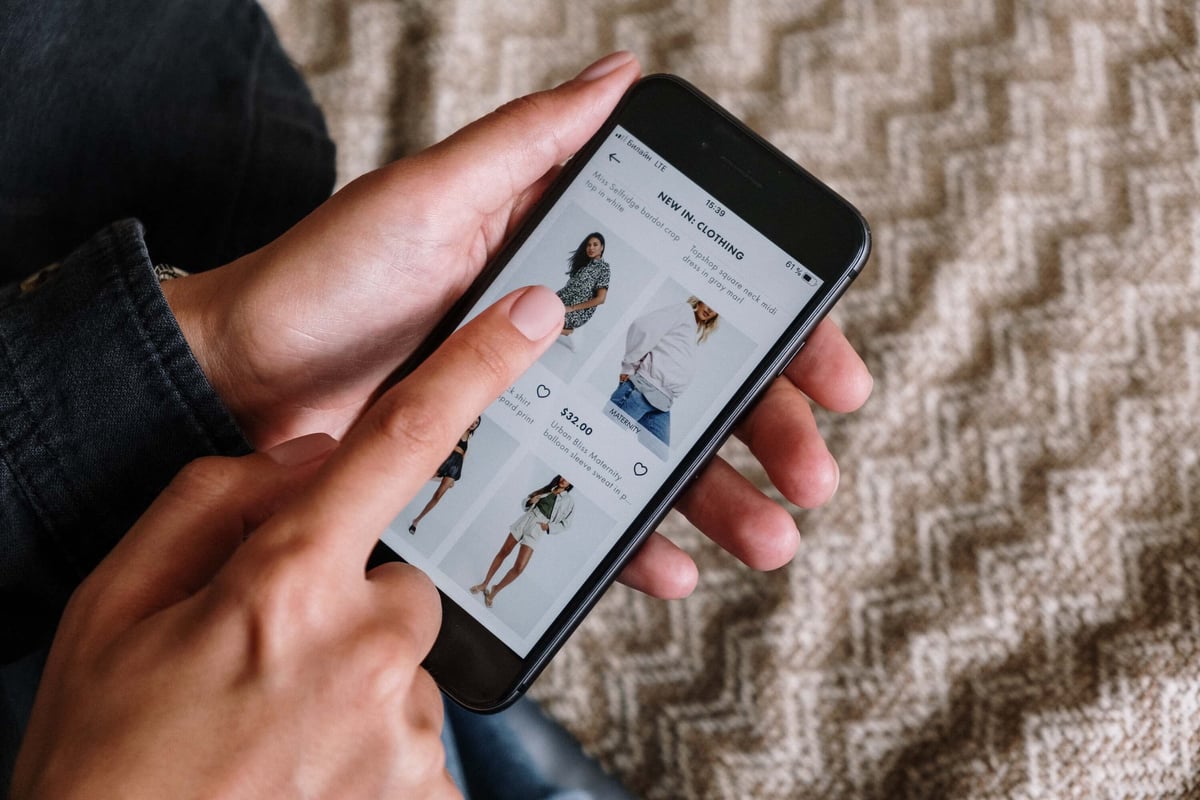8 Major Tech Trends That Will Shape Retail in 2022 (and Beyond)

The rising role of artificial intelligence and machine learning, the growing need for a seamless shopping experience, and increasing personalization have made their mark on the retail landscape. These trends are here to stay, not only when it comes to e-commerce.
With that in mind, what retail technology trends can we expect to shape the industry in 2022 and beyond?
Headless tools as unified commerce enablers
The demand for a seamless shopping experience in all retail channels becomes more and more apparent. That’s why many retailers are moving from multi and omnichannel to a unified commerce approach. Yet, to provide a truly harmonious experience, companies must unify the structure of their tools and software architecture.
This shift involves using a “headless commerce” that separates customer-facing elements from back-office processes. According to Michał Sędzielewski, some companies are already leveraging the benefits of this solution:
"Some retailers are already profiting from the agility and flexibility of MACH (microservices-based, API-first, cloud-native, and headless) software. API-first software is much faster to implement and can help retailers implement and test new ideas within days or weeks, which can greatly increase the speed of innovation and competitiveness."
Michał Sędzielewski
CMO at Voucherify
Headless tools improve system functionality and flexibility, making it much easier for retailers to sell their products via several channels, including their website, social commerce channels, and even brick-and-mortar stores. This way, companies can increase customer satisfaction, reduce error risk, and gain a single source of truth with a 360-degree view of their customers.
The growing role of machine learning in supply chain management
Another retail technology that’s on everyone’s lips is machine learning.
Retailers will continue to invest in artificial intelligence and machine learning to seek efficiency and adaptability. Companies will further leverage the benefits of using ML in sales funnel optimization, putting an ever greater emphasis on its serviceability in supply chain management.
Machine learning will help retailers automate tedious inventory-related tasks and processes and mitigate risks, e.g., poor resource planning.
Thanks to real-time and predictive resource analysis, machine learning will also allow them to become more time and cost-efficient while offering a high-quality service to end customers.
Frictionless payment as a new must-have
As customers expect retailers to provide the same seamless experience across all channels, retailers must comply with their needs. One way of achieving this is by enabling frictionless payments.
Still one of the most significant pain points of the retail-customer experience, payment systems will have to incorporate the ability to pay from anywhere, with the customer in control of the payment channel.
Due to the diminishing use of cash, retailers must introduce other solutions in tune with their customers’ preferences. Whether it’s a credit card, mobile, or the increasingly popular buy now, pay later payment solutions, customers will have to be able to pay without any, well, friction.
Virtual try-ons on the rise
Although it saw some traction in 2021, many retailers were still uncertain about introducing this retail technology into their business. Not that much of a surprise, given that VTO was still far from mature. Yet, the prolonged pandemic, technological advancements, and more data on the beneficial effects of virtual try-ons make companies very hopeful for the future.
"In the next few years, we should witness a big development of augmented and virtual reality hardware. The devices will become much handier, easier to operate, and less tiring to use. It will be much easier to combine offline and online experiences."
Maciej Baraniak
CEO, Co-founder at Monsoon.Agency
By connecting augmented reality with the idea of unified commerce, VTO offers both an online and in-store solution tailored to customers’ needs in various channels.
Virtual try-ons can help consumers make more confident purchase decisions, resulting in increased sales and reduced return rates. A boost in sales and desire is not the only benefit, though.
Retailers can use VTOs to test demand for specific items, enabling more thoughtful manufacturing processes and enhancing their sustainability efforts, potentially saving some valuable time and money.
Companies can also use virtual try-ons and AR in brick-and-mortar stores too, e.g., to help customers find a better fit by recommending the right size of the dress or shoe, or to try on different colors of a given garment that is currently not available in their offline spot. This way, retailers can improve their revenues and make the shopping process more exciting and satisfactory for the customers.
Zero interface retail
Another major retail trend for 2022 is a broader introduction of zero interface design. While the pandemic has accelerated the digital transformation in retail, the need for changes was there much earlier. For years companies and users have been looking for ways to make human-machine interaction more personal, and now the time to make it happen has come.
Due to a (mis)belief that zero interface retail is a channel strategy instead of an experience enabler, retailers have been a little apprehensive about introducing this approach. Nevertheless, the need for conversational user interfaces (CUIs) will continue to grow, as will the market demands.
What’s more, thanks to the permeating use of artificial intelligence and constantly advancing NLP (Natural Language Progressing) capabilities, voice will become an enabler across the entire user journey.
From online to offline with experiential retail
Far from being dead, brick-and-mortar stores have returned with a significant rebound, but their nature is changing. Forced by evolving customer needs and the pandemic, retailers are now facing a big shift in the role of brick-and-mortar stores in the sales process.
We’re likely to see companies investing in driving the in-store experience as a point of differentiation and a place where the consumer can truly experience the brand.
To come back to their former glory, brick-and-mortar shops will have to adjust to the demands of modern, digitally-native customers. Customers, who are used to a certain level of CX, expect to receive the same shopping experience offline and online.
Companies can address their needs with experiential retail that goes beyond the traditional experiences commonly offered by the physical stores.
From digital installations and interactive displays to personalized consumer experience, retailers will use intelligent retail technology to drive engagement and loyalty — boosting their offline sales and evolving the role of brick-and-mortar stores.
A great example of such actions is the emerging brick-and-mortar store from Gymshark, which aims to create space for people to experience the brand and celebrate its community rather than just pop in for shopping. This is a model that is likely to see growth, despite the expenses that often come with setting up and managing physical stores.
Technological facilitators of a more sustainable retail
Customers are more and more aware of the way retail and consumerism affect the environment. According to research, 60% of consumers are willing to change their shopping habits to reduce the destructive environmental impact. This means customers are now looking closely into their shopping choices.
It’s no surprise that, buoyed by this consumer need for sustainability, retailers will look to increase their transparency and search for ways to work together on finding the best solutions to current problems.
One way to do so is by using AI/ML-powered technologies across their supply chains to reduce current and future waste. Introducing artificial intelligence and machine learning to monitoring and inventory processes can help retailers become much more sustainable and save money at the same time.
Another one includes introducing new business models such as the circular economy. As a growing number of consumers buy into the idea of recycling, reusing, repairing, renting, and reducing, companies will need to match their new habits to stay relevant.
Whether by choice or compulsion, retailers will need to find their way towards a more sustainable business.
Grab-and-go and contactless payments for the win
"In 2022, a trend in contactless and self-checkout will grow. Consumers will want an easy, quick checkout in their carts."
Fatima Baz
Digital Innovation Manager at Unilever
Self-checkout and contactless payment have been an undeniable success for commerce, especially given the unexpected emergence of COVID-19.
Yet, according to a report by Kinsley, 79% of consumers intend to continue or increase their usage of self-checkouts in retail even after the pandemic. Why? The answer is pretty simple.
Consumers appreciate the speed and ease of contactless checkouts and payments, which remind them of their user-friendly and smooth online experience. Learning from their experience with e-commerce, retailers will need to introduce similar solutions offline.
"Shorter queues at the checkout are one of the most significant advantages of contactless payment. Customers do not need to carry cash or be hassled with punching in PINs. Computer Vision cameras, weight sensors and AI will suffice to allow for speed, easiness and more freedom when shopping."
Fatima Baz
Digital Innovation Manager at Unilever
Summary
After the initial shock brought by the COVID-19 pandemic, many retailers have used 2021 to develop new strategies and re-engineer their business models to adapt to the changing circumstances.
Moving into 2022, companies will need to focus on addressing the rising needs for sustainability and seamless customer experience, especially within brick-and-mortar stores. Machine learning and artificial intelligence adaptation, VTOs, and experiential retail will become increasingly popular with customers who are looking for personalized and out-of-the-box solutions.
In the next year, less will be more. Consumers will expect contactless payments and a frictionless shopping experience, which will be followed by a rising number of companies using technologies such as grab-and-go.
All in all, to succeed in 2022 and beyond, businesses need to carefully follow the latest retail trends and cultural evolutions, learn which technologies to apply and how to do it the right way.











